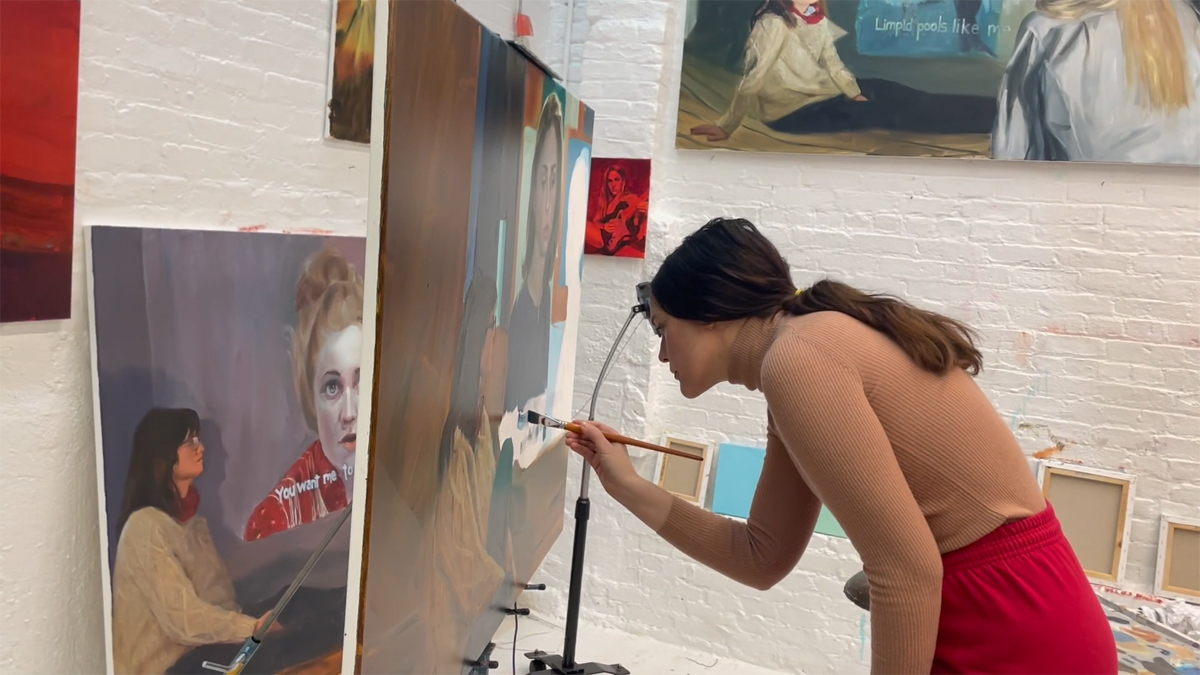The Art of Making It
(USA, 94 min.)
Dir. Kelcey Edwards
The art world is so out of control that the crisis has spawned a new field of documentaries. The Art of Making It tackles the increasingly volatile business of art with a healthy palette of piss and vinegar. After docs like Blurred Lines: Inside the Art World and The Price of Everything (whose producer Debi Wisch is among the extensive producer credits here) comes a film that tackles the world of high prices and low payouts for artists. This first feature by Kelcey Edwards synthesizes many of the perverted dynamics of the art world articulated elsewhere. The lucrative commodification of contemporary art, for example, or the seemingly diminished value of discerning taste might fuel other docs. Those topics are merely starting points, however, for Edwards’ incisive study of a growing catastrophe that examines a crisis from all angles.
The film offers a glimpse of the perverse power dynamics that drive the culture scene with its first gallery tour. Edwards’ camera follows art dealer/disrupter Stefan Simchowitz as he scopes out an exhibition. Gliding through gatekeepers, curators, critics, and culture vultures slaking their thirst with free chardonnay, Simchowitz demonstrates the art world’s tightly controlled network. He’s clearly not welcome at the party. Curators, dealers, and artists speak to him cautiously. They’re flubbing their lines, inventing sales, and omitting prices because they know the cameras are rolling. Through his visit, Edwards observes how the true art at the gallery is not on the walls, but the B.S. the gatekeepers sculpt to perfection.
The Business of Art
Dealers make huge profits by selling art. This information, like much of what arises in the doc, isn’t new even as the prices continue to widen one’s eyes to panoramic lengths. The doc underscores how art is becoming increasingly transactional. People buy art to “flip” it, meaning they grab it on the cheap and re-sell it for profit. Artists don’t see a slice of that bread, though. Edwards uses this rampant problem to ask how, when, and why the art world lost its soul.
There’s a lot to unpack here and the film respectably knits myriad threads together. For example, the film considers the case of artist Chris Watts. Edwards observes as Watts prepares pieces for an exhibit. These ambitious works bare himself and speak to the moment. Watts makes abstract creations that use textures, colours, and fractured images to explore the violence wrought upon Black lives. The bulk of the film takes place pre-COVID, and it’s striking how sharply he anticipates the storm to come in 2020. However, Edwards learns through Watts’ story how ambitious artists who seek to provoke, question, and inspire rarely succeed.
Watts’ story bleeds into the competitiveness, and restrictiveness, of fine art studies. He reveals that he was dismissed from Yale’s MFA program. Even his teacher admits in an interview that the artists who graduate from the program and find great success aren’t necessarily the best or brightest. They’re just the shrewdest at navigating the demands of the business. Personal branding and marketing savvy therefore offer greater tickets to success than a fine hand with a paintbrush does. Moreover, the film acknowledges that good business sense is an asset in such a competitive field, but while asking why the gatekeepers and kingmakers don’t use their platforms to vaunt the mavericks.
Art Over Commerce
The film looks at the other side of the field where people make a conscious choice to favour creativity over commerce. At The Mistake Room, for example, curator César García-Alvarez emphasizes the work of underrepresented artists. He speaks to the need to diversify the curatorial practice with an intersectional approach. Gatekeepers can’t merely put art by people of colour on the walls and say the field is equal. He advocates for the art world to consider dynamics of class and citizenship, and how art expresses these facets of experience. Creators like his current protégé, Felipe Baeza, demonstrate how artists who don’t fall into the conventional canon are left behind. Moreover, Baeza acknowledges how the art world’s habit of labelling creators limits the contexts in which their work is received. He notes that critics/curators often only discuss his art through the lens of migration, which omits the dynamics of queerness and the tactility of his art. Works by interviewees Jenna Gribbon and Gisela McDaniel are similarly inspired. However, much of what the film sees in the galleries is, ironically, artless.
Participants like Andrea Bowers, meanwhile, underscore the talking points of Watts’ story. Bowers invites Edwards into her studio and explains how she quit teaching at university because she couldn’t consciously participate in a system that riddles students with debt they’ll never escape amid the market. Instead, she invites artists to learn through apprenticeship. One of her protégés is over $400,000 in debt due to school—a price tag his work will only net long after he’s dead.
To Laugh or Not to Laugh
The Art of Making It has a great sense of humour about the absurdity of the arts biz and illustrates that one is necessary to survive. Curator turned commentator Hilde Lynn Helphenstein, for example, shares her insider’s view through the hilarious Instagram account Jerry Gogosian, named for critic Jerry Saltz and contemporary gallerist/dealer Larry Gagosian. She turns memes into art by drolly emphasizing the grotesque truths of the trade. And the art world is livid.
There are less laughs to be found once COVID enters the picture and hits artists even harder. Moreover, as COVID shuts physical spaces and makes art a further transactional affair where pieces aren’t even displayed before they’re purchased, the interviewees agree that the tipping point has been breached.
For film buffs, it’s a fascinating doc to watch as our own industry finds itself in turmoil. When tentpoles like Lightyear dominate every screen in town and play to empty rooms, yet brilliant original works like Turning Red have audiences contentedly tuning in at home, or when Warner Bros. shelves a $70 million film like Batgirl in favour of a tax write-off, many of the arguments raised in The Art of Making It apply to any creative field in crisis. The film smartly engages audiences through art to remind them that creative works that enlighten and inspire are priceless.
The Art of Making It screens at Hot Docs Ted Rogers Cinema beginning August 5.














